2016-17 B1G Basketball Preview: Nebraska

Tai Webster [Nate Olsen – Nebraska Communications]
PREVIOUSLY: Illinois, Indiana, Iowa, Maryland, Michigan, Michigan St., Minnesota
Because of his affable persona and love of halftime tweets, Tim Miles has become one of the more widely-liked coaches in college basketball. After a nice stint at Colorado State, he got the Nebraska job – despite the new, state-of-the-art facilities in Lincoln, it’s tough job due to plenty of factors. Nebraska was obviously added to the Big Ten for its football cachet; the basketball program is one of a few to never win an NCAA Tournament game (though they’ve made it to the dance several times, most recently in 2013-14, Miles’s second year at Nebraska).
Unfortunately the Huskers took a step back from that tournament appearance, even though they had most of the same personnel – they lost their final nine games that season and finished with a losing record. They lost ball-dominant wing Terran Petteway but added Andrew White, a Kansas transfer, to pair with Shavon Shields. Still, the Huskers finished with a losing record yet again – in the two years after reaching the Tournament, they’ve gone a combined 11-25 in conference play, tied with Penn State for third-worst in the Big Ten during that span.
The unexpected (and late) transfer of White takes away the prospective best player for Nebraska, and it looks like the Huskers will probably struggle again. White put his name in for the NBA Draft – and took it out, which is common – before deciding to leave Nebraska to take a fifth-year somewhere else to help his draft prospects (and he picked Syracuse, a team that will undeniably be better).
Without the talent requisite to compete for an NCAA Tournament bid, it’s likely that Nebraska will finish in the bottom half of the conference again. Miles bought some time with that appearance a few years ago, but without progress, it’s easy to wonder how long he’ll last in Lincoln – though my guess is that the Nebraska brass will be patient.
[More on the Huskers after the JUMP]
LAST SEASON
Miles’s teams at Nebraska have typically featured two high-usage players and last year was no exception. Shavon Shields – a senior who operated in iso situations from the three-point line or mid-post, mostly as a four – had the highest usage rate in the Big Ten and actually was pretty efficient, given his workload and the players around him. Shields will be sorely missed as Nebraska looks for players who can create with the ball in their hands.
Andrew White was one of the most underrated players in the league and could have shined in even more of a featured role, but he’s gone as well. White’s a great shooter (41% from three on over 200 attempts) and his combination of usage and efficiency was one of the few bright spots for Nebrasketball last season. His overall shooting splits of 55 / 41 / 78 (2P% / 3P% / FT%) were excellent and he’ll be sorely missed on the offensive end.
Tai Webster and Glynn Watson were similarly effective players and could potentially be the starting backcourt this year for the Huskers (though 6’3 Louisville transfer Anton Gill will probably take a spot from one of them) – Webster was a relatively highly-touted recruit from New Zealand who’s taken some time to acclimate to the college game; Watson emerged as a freshman point guard who allowed Webster to play off the ball some. Each player had a steal rate of 2.9, indicating that they’re a strong defensive duo in the backcourt.
Outside of those two, the returning players generally didn’t make that much of an impact. Michael Jacobson won the starting center job and was reasonably efficient, mostly due to his strong free throw shooting – and he also was effective on the offensive glass and as a shot-blocker. Jack McVeigh, mostly just a shooter as a freshman, hit 34% of his threes. Ed Morrow shot the ball well but turned it over too much.
Four Factor Z-Scores from games against Big Ten opponents
The Huskers’ efficiency margin in conference play (-1.5 points per 100 possessions) indicates that they were better than their record, but they were still below average on both ends of the court. Their three-point shooting (34% as a team) hindered their overall shooting; a good turnover rate and decent offensive rebounding rate helped them generate extra possessions, but nobody outside of Shields could get to the free throw line consistently.
Their defense was poor, mostly because they allowed opponents to hit 39% of their threes in Big Ten play. Kenpom theorizes that 3-point defense is mostly random, and if that is the case, there should be a regression to the mean in that regard this season. Nebraska was good at forcing turnovers, iffy at keeping opponents off the glass, and they fouled a lot.
NEWCOMERS
Tim Miles’s biggest addition once again came on the transfer market, as former Top-50 recruit Anton Gill left Louisville for more playing time and eventually chose Nebraska. Gill is a scoring combo guard who likes to attack the basket and, with the amount of possessions vacated by Shields and White, there will be more than enough opportunities for him to get shots up. There’s a decent chance that Gill will be Nebraska’s leading scorer; he’ll definitely be given more of a chance to showcase his skills than he was given at Louisville. While Andrew White’s departure from Lincoln was a bitter end to his career at Nebraska, his success there showed that a transfer from a blue-blood could have success for Miles.
The Huskers haven’t yet been able to parlay their new facilities into a commitment from a top recruit, but they did sign three high-3* prospects in the 2016 class. Isaiah Roby and Jeriah Horne are players cut from the same cloth: they could play both forward positions, they’re two-way players, and they show nice versatility in terms of how they play. Roby is known for his defensive prowess in particular, while Horne has the reputation of a good mid-post scorer who can play as an undersized four because of his physicality.
Joining them in the class is Canadian big man Jordy Tshimanga: he’s a huge center with good hands and the physical profile to bang down low with some of the Big Ten’s burlier centers. He might be the best long-term prospect in the class, though all three are nice building blocks for the future.
Miles responded to White’s departure by signing a JUCO transfer, Evan Taylor, a guard who started his college career at Samford.
PROJECTED ROTATION
-
STARTER (COMBO GUARD) – Anton Gill (Jr, 6’3, 195): The guess here is that Gill – likely the best scorer on the team – will get a starting spot, he’s best at driving into the paint and attacking the basket, may not be a great distributor.
-
STARTER (GUARD) – Tai Webster (Sr, 6’4, 195): Has steadily improved throughout his career, developing a credible three-point shot, best as a defender, can get to the free throw line, may slide to the three if Miles wants Watson / Gill / Webster to play together.
-
STARTER (WING) – Jack McVeigh (So, 6’8, 215): Lanky big man was reputed to be a shooter, took 64% of his shots from deep but only hit 34% (second on the team in threes made last year), will be critical for spacing.
-
STARTER (TRADITIONAL FOUR) – Ed Morrow (So, 6’7, 234): Physical player had nice block and rebound rates in a small sample size of playing time, shot 63% from the field, mostly from close to the basket, turned it over a lot.
-
STARTER (POST) – Michael Jacobson (So, 6’9, 239): Solid as a freshman, typical big man profile with good offensive rebounding and block rates, efficiency mostly due to his ability to get to the free throw line and convert those opportunities (78%).
-
BENCH (POINT GUARD) – Glynn Watson (So, 6’0, 174): Closest thing to a true point guard on the roster, played more as the season progressed, could be a starter this season, not a shooter, struggles to finish at the rim because of his lack of size.
-
BENCH (WING) – Isaiah Roby (Fr, 6’8, 214): Most highly-touted player of the 2016 class, could make an impact with his defensive energy, could play the four in time, but probably too skinny right now.
-
BENCH (WING) – Jeriah Horne (Fr, 6’7, 222): Versatile freshman wing could provide some scoring off the bench, but may be forced into a complementary role because of his inexperience.
-
BENCH (TRADITIONAL FOUR) – Nick Fuller (Jr, 6’7, 213): Played sparingly last season, though has the profile of a more traditional power forward, might be out of a spot if Miles emphasizes spacing more.
-
BENCH (POST) – Jordy Tshimanga (Fr, 6’11, 275): Enormous big man might not have the conditioning to play big minutes, but should be an imposing presence in the paint, might have the most upside of anyone on the roster.
PLAYER COMPARISON
A few years ago, I came up with a system that would compare the statistical profiles of Big Ten players to their historical counterparts by taking the sum of the differences between a given player’s profile and each of the thousand player-seasons from 2008-present in twenty different statistical categories.
# value is the Z-Score of the player’s statistic (or statistics averaged over multiple seasons) relative to the entire sample
It was a surprise to see Evan Turner show up atop the list of Tai Webster’s most comparable players, though there is some merit to the comparison – Turner was woefully inefficient as a freshman but showed off the defense and all-around game that eventually made him into a National Player of the Year. Turnovers were his biggest problem as a freshman. While Webster’s development track won’t resemble Turner’s, the stylistic similarities are interesting.
As for many of the other names on the list, there’s a common strain tying them together – reputations as defensive stoppers. Raphael Davis and David Lighty, in particular, were lockdown defenders, although they functioned more as wings (as opposed to Webster, who’s more of a guard). Webster came to Nebraska with a lot of hype and was lost on the offensive end for his first two seasons; last year he was better and he could be one of the more under-the-radar quality players in the conference this season.
OUTLOOK
Much like Penn State, Nebraska is a football school that struggles on the hardwood; the lack of historical success, a solid recruiting base, and the general inertia of college basketball mean that it’s hard for the Huskers to gain traction – even though they have nice facilities and good fan support. Since joining the Big Ten, they’ve averaged a record of 6.2-11.8, which is solidly in the lower part of the league. Four of those five seasons were under Tim Miles.
Miles is a good coach, though it’s hard not to wonder why the roster seems perpetually young and why Nebraska couldn’t build on its breakthrough tournament appearance in his second year. That regression from 2013-14 to the next season was inexplicable, and the Huskers have yet to recover. With the departure of their two key players from last season, it’s likely that they’ll finish near the bottom of the league again, though Miles will keep them from falling into the Rutgers tier.
That said, there are a few things to like about this team. The defensive potential is there, and if Anton Gill is as good as advertised, Nebraska will have that crucial player who can get buckets himself; of course, Gill’s time at Louisville casts doubt on that ability. Glynn Watson and Tai Webster make up a decent enough backcourt, but Gill will be key if the Huskers are to exceed expectations. Nebraska will probably be patient with Miles – and rightfully so, considering that they’d probably take some steps backwards if they were to rebuild again – and the nucleus of this team is young – with Webster as the only senior. They’ll be looking for signs of hope for the future this year.
October 26th, 2016 at 3:47 PM ^
I believe every front page story needs a comment!
#AllStoriesMatter
October 26th, 2016 at 5:50 PM ^
Sent from MGoBlog HD for iPhone & iPad
November 14th, 2016 at 10:01 PM ^
I think Tim Miles is a dead man walking.
Shawn Eichorst basically has been looking for any reasons to fire coaches hired by Tom Osborne.
First Bo Pelini, then Connie Yori last year. Tim Miles will be out by the end of the year.
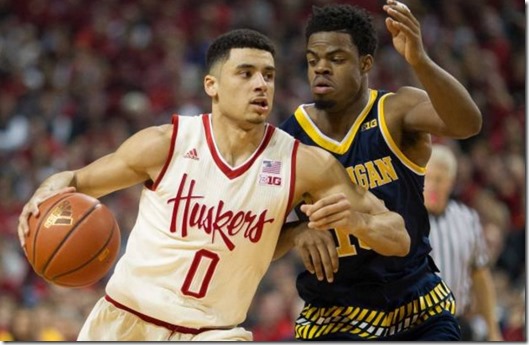
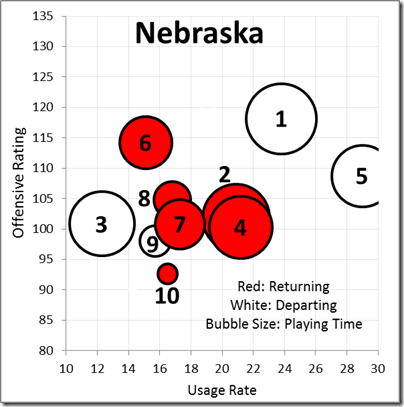
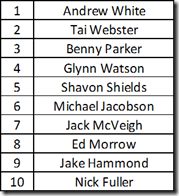
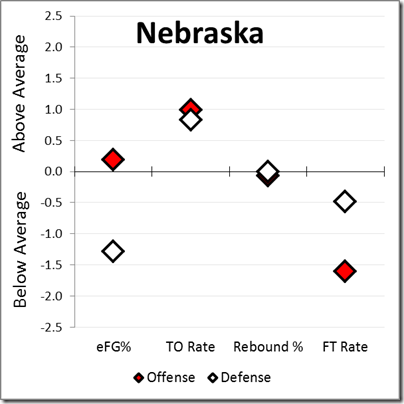
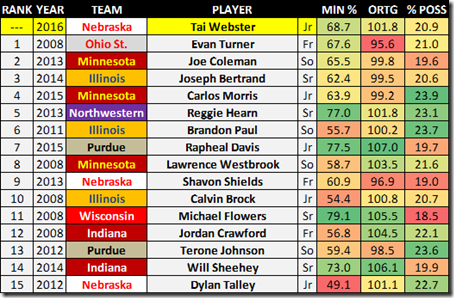
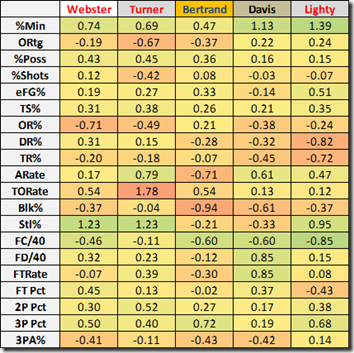
Comments